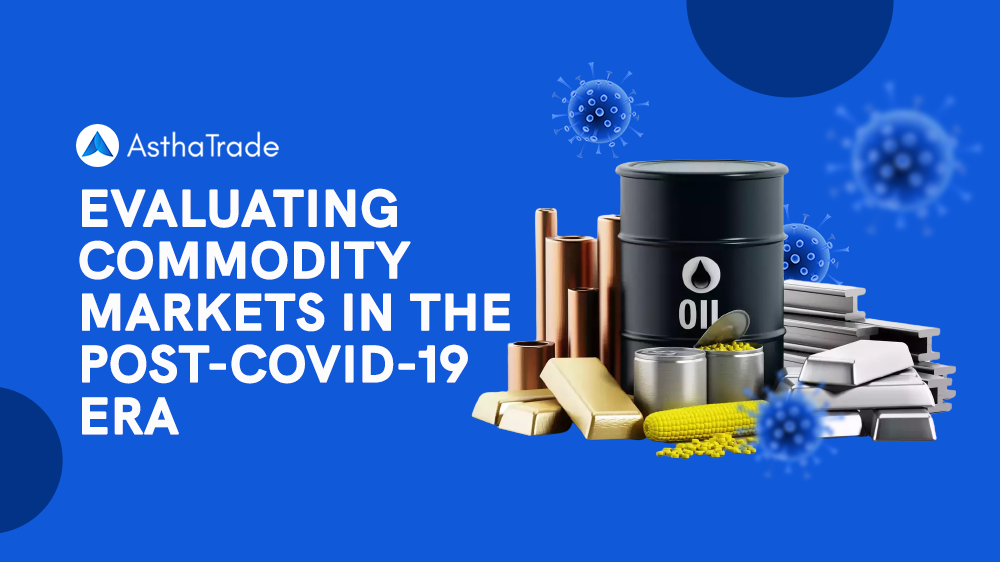Impact of Covid-19 on Commodity Markets
Summary: A deep dive into how the pandemic changed the global economy leading to significant changes in commodity markets.
The Covid-19 pandemic has dealt a massive blow to the worldwide economy, triggering the greatest global recession since World War II.
Significantly outstripping the recession induced by the global economic crisis in 2009. The outbreak also influenced commodity markets, but the price impact was varied.
The gap between consumer and producer prices widened significantly for several commodities, particularly for those prone to supply chain disruptions.
COVID-19’s impact on energy markets is expected to be irreversible in the future. Its impact on other commodity markets, on the other hand, will most likely be transient.
Nonetheless, the virus is likely to have long-term implications for commodities markets, including decreasing oil consumption, changes in transportation costs, and supply chain unravelling.
This article extensively discusses current events and how the outbreak has affected and is anticipated to affect the following commodity markets:
Impact on Energy
As a result of the coronavirus (COVID-19), which had severely reduced transportation, the oil demand had declined in 2020 and 2021.
The price of crude oil had declined since the beginning of 2021 and had fallen by 65% from January 2021 to April 2021.
In April, the price of Brent crude oil had averaged $ 23 / bbl, which was a minimum of ten years.
The failure of OPEC + negotiations in early March had worsened the price fluctuations, and a new deal was announced on April 12, 2021, but had failed to raise prices.
In the first week of May 2021, prices rose slightly as the lockdown closures of several countries were relaxed but remained at very low levels.
Due to this, oil prices were predicted to average $44 per barrel, up from $41 per barrel in 2020.
As of 2022, demand growth is fast due to decreased health worries and increased tourism and travel.
Though the worldwide economic activity is only expected to return to pre-pandemic levels in the year after next, the supply constraint is easing gradually.
According to a revised projection released in April, energy costs, including natural gas and coal, are likely to rebound significantly in 2022 after significant drops in 2020 and 2021.
Also, after the recent Russian invasion of Ukraine, prices have risen sharply, leaving many European countries unsure of how to meet demand in the long term.
While Russia’s power cut-off supply is high, the pipeline continues to flow.
A decline in the pandemic, resulting in no more lockdowns, increased consumption due to increased vaccination, and the ongoing war may result in higher energy prices than expected.
Impact on Agriculture
Agricultural prices have remained relatively constant since 2015, with a few outliers, owing to healthy crops and stock rebuilding.
The global forecast for the current season indicates that the most essential grains will be in plentiful supply.
Global output of the three primary grains—wheat, maize, and rice—is expected to climb 3.6 percent this season, according to the US Department of Agriculture’s October 2020 update.
Even though consumption is predicted to rise at a similar rate, stocks-to-use ratios for most grains and oilseeds (a rough measure of supply versus demand) are expected to reach historic highs.
Following an increase in 2020 and 2021 due to a shortage of edible oil, agricultural prices are predicted to rise sharply in 2022.
Food insecurity is still a significant concern in many developing markets and developing countries.
The global crisis has wreaked havoc on revenue, and there are barriers to food security at the local level and narrow limits on the provision of labor.
Pressures on rising food prices have increased in several countries.
Impact on Metals
Metal prices fell following COVID-19 (though not as much as oil) but quickly recovered following a faster-than-expected rebound in China’s industrial activity.
China accounts for more than half of global metal demand, so changes in its industrial activity have a significant impact on most metal markets.
The demand for metals began to perk up outside China as trade restrictions in Europe, and the United States were relaxed.
Copper prices, a measure of the global economy’s health, have recovered due to the increasingly positive attitude toward metals.
Metal prices will likely rise modestly in 2022 after decreasing in 2020 and 2021.

